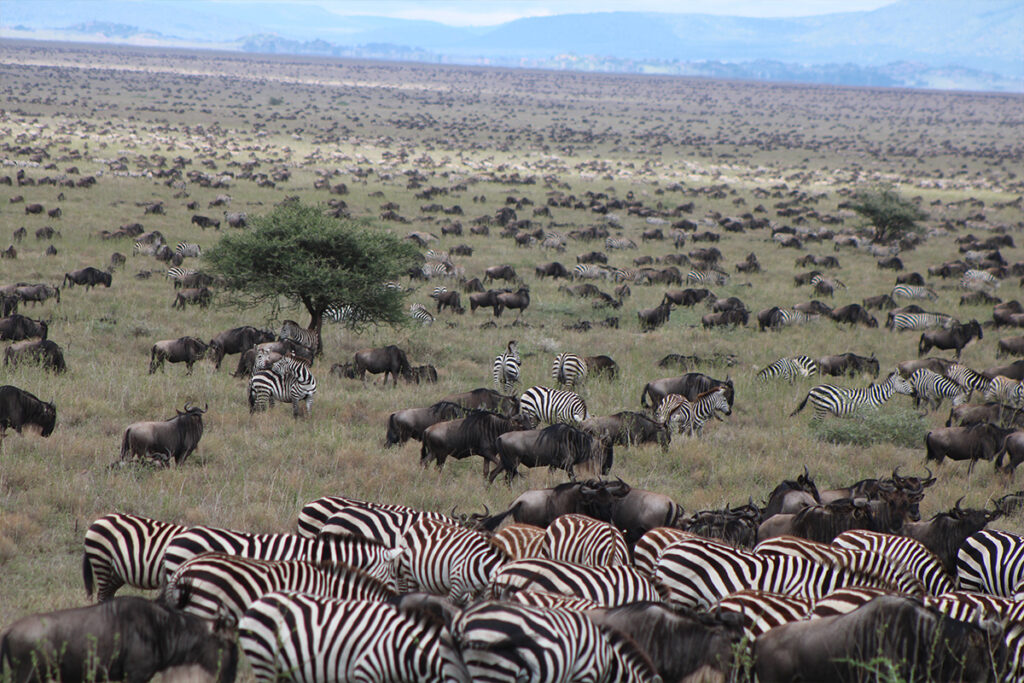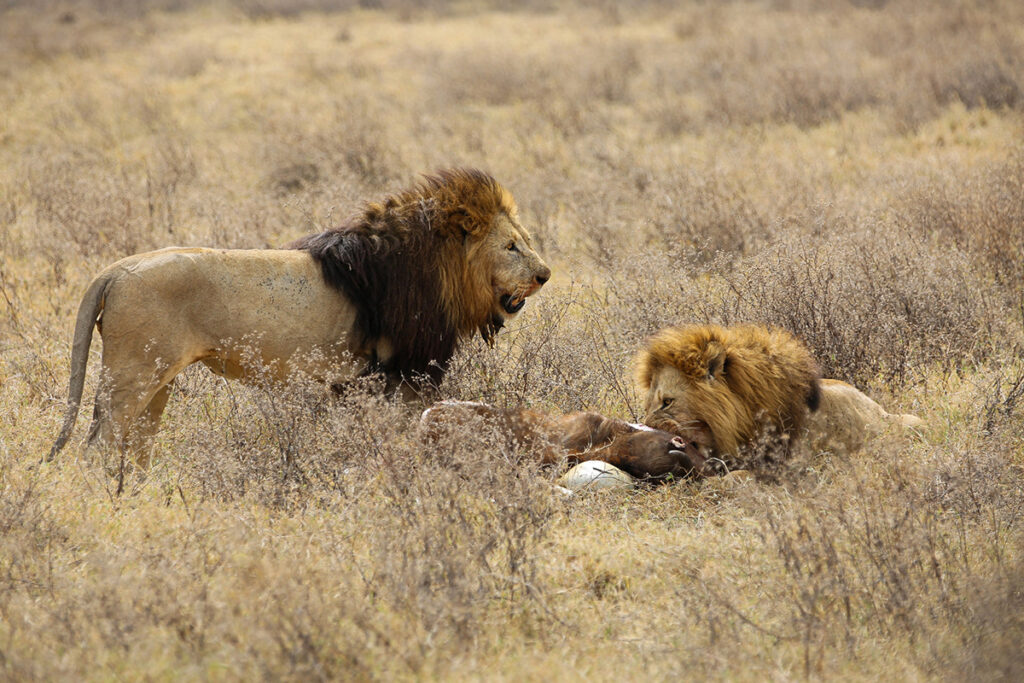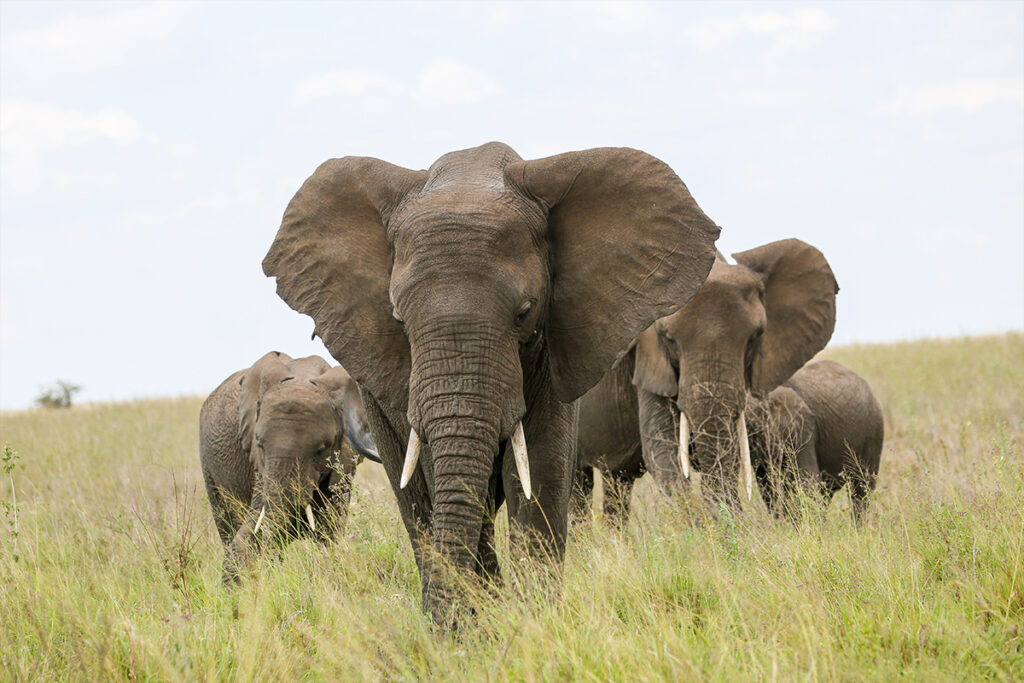Each year, over 30,000 adventurers take on the challenge of climbing Mount Kilimanjaro, Africa’s highest peak. Yet, many are unaware that there are seven established routes to the top, each offering a unique experience. Selecting the appropriate route can significantly impact your success rate and overall enjoyment.
The Machame Route, often dubbed “The Whiskey Route,” is renowned for its stunning scenery and high success rate. Conversely, the Marangu Route, known as “The Coca-Cola Route,” is considered the easiest but tends to be more crowded. For those seeking solitude, the Northern Circuit might be the best option as it’s less traveled. Understanding the characteristics of each route is essential for an optimal climbing experience.
- Machame Route: Known for its scenic beauty and high success rate.
- Marangu Route: The oldest route with hut accommodations, often crowded.
- Lemosho Route: Offers varied landscapes and is less traveled.
- Rongai Route: The only northern route, quieter with gradual ascent.
- Umbwe Route: The steepest and most challenging, suited for experienced climbers.

Top Kilimanjaro Routes: A Comparison Guide
Climbing Mount Kilimanjaro is a dream for many adventurers around the world. To make this dream come true, choosing the right route is essential. Each path offers different challenges and scenic views. The Machame Route, known for its beauty, is popular among climbers. It has a high success rate because of its acclimatization opportunities.
The Marangu Route is often called the “Coca-Cola Route” due to its ease and the huts provided along the way. It’s a good choice for beginners who prefer a steady and sheltered climb. However, it can be crowded due to its popularity. On the other hand, the Lemosho Route offers a quieter, more peaceful experience. Its diverse landscapes make it one of the most scenic routes available.
For those seeking solitude, the Rongai Route starts from the north. It’s the only route from this side and doesn’t see as many climbers. This path provides clear views of Kenya and the majestic wildlife. Meanwhile, the Umbwe Route is the shortest and steepest, ideal for experienced climbers. It’s challenging but offers spectacular views from higher altitudes.
When planning your climb, consider factors like difficulty, duration, and crowd levels. A
- good guide
- ample preparation
- and the right gear
are necessary for a safe journey. Climbers should also respect the mountain’s environment to preserve its natural beauty. Whether you choose Machame or Umbwe, each route to Kilimanjaro promises an unforgettable adventure.
Climbing Kilimanjaro | 9 THINGS You Need To Know
Machame Route: The Scenic Journey
The Machame Route, often dubbed “The Scenic Journey,” offers breathtaking views of Mount Kilimanjaro. This path begins at Machame Gate and winds its way through lush rainforests. As climbers ascend, they experience diverse landscapes, from moorlands to rocky outcrops. The route provides a great opportunity to acclimatize due to its gentle ascent and varied terrain. This makes it a favorite among many climbers.
Unlike other routes, climbers on this path use tents instead of huts, which adds a sense of adventure.
- Campfires
- stars
- and the sounds of nature
create an unforgettable outdoor experience. The Machame Route typically takes around seven days to complete. This gives climbers plenty of time to enjoy the scenery. It’s important to remember that the journey isn’t just about the summit, but the entire trek.
The views from Shira Camp, one of the stops, are particularly stunning. Climbers can see the snow-capped peak in the distance, an inspiring sight. Another famous spot is the Barranco Wall, a challenging yet thrilling climb. Many consider this part the highlight of the route. Reaching Uhuru Peak is the ultimate reward for the days of effort and dedication.
Choosing the Machame Route requires preparation and determination. A
- sturdy pair of hiking boots
- warm clothing
- and a reliable guide
are essential for a safe trek. Climbers should also be aware of altitude-related challenges and take necessary precautions. With its stunning views and varied experiences, this route offers a remarkable adventure for those prepared to take on its challenges.
Marangu Route: The Traditional Path
The Marangu Route, known as “The Traditional Path,” is one of the most popular ways to climb Mount Kilimanjaro. It is often called the “Coca-Cola Route” because of the soft drinks available at the huts along the way. This path is the only route that offers dormitory-style sleeping huts, providing more comfort. The trail passes through lush rainforests, offering climbers a chance to spot unique wildlife. It’s a straightforward trek, making it ideal for beginners.
Despite its popularity, Marangu is sometimes busier than other routes. This means more people on the path, but it also offers great camaraderie among climbers. The trek typically takes about 5 to 6 days from start to finish. Two key resting points, Horombo Hut and Kibo Hut, provide shelter and a chance to meet fellow climbers. As you ascend, the landscape changes, offering varied scenery to enjoy.
At the end of the route, reaching the summit from Gilman’s Point is the final push to Uhuru Peak. The sunrise view from the summit is breathtaking, rewarding climbers for their hard work. Marangu’s gentle slopes make it one of the easier routes on the mountain. However, climbers must still be prepared for altitude challenges. Safety and proper preparation are essential for a successful climb.
For those considering this path, check the packing list:
- warm clothing
- sun protection
- and a comfortable backpack
are must-haves. Climbers should also respect the environment, following leave-no-trace principles to protect its natural beauty. The Marangu Route offers a chance to experience Kilimanjaro’s majesty along a path steeped in tradition. For many, it’s a memorable journey with a rich history.
Lemosho Route: The Wilderness Experience
The Lemosho Route offers climbers an untouched wilderness experience, winding through beautiful landscapes. Starting on the western side of Mount Kilimanjaro, it traverses lush rainforests and scenic moorlands. The journey takes about 7 to 8 days, allowing for ample acclimatization time. This slower pace helps increase the success rate of reaching the summit. Many climbers choose this route because of its stunning views and unique terrain.
With fewer crowds than other routes, Lemosho offers a true sense of adventure and solitude. This path provides excellent opportunities for wildlife sightings, such as monkeys and exotic birds. The trail gradually ascends past the Shira Plateau, offering panoramas of the surrounding landscape. At night, the sky comes alive with countless stars, providing a breathtaking backdrop. It’s a trek filled with sights that captivate and inspire.
One of the most exciting parts of the journey is crossing the Lava Tower and Barranco Wall. The Lava Tower at 4,600 meters is a great acclimatization point, although challenging. Barranco Wall, while steep, offers exhilarating climbing with rewarding views. Both spots are highlights for those seeking adventure and breathtaking scenery. Climbers must be prepared for the physical demands and carry the necessary gear for safety.
The Lemosho Route also offers the chance to camp in different environments:
- lush forests
- barren landscapes
- and rocky terrains
making each night distinct. Staying in tents adds a sense of adventure that many hikers enjoy. It’s essential to pack warmly as the temperature drops significantly at higher altitudes. Adequate preparation is key to a successful climb on the Lemosho Route. Climbers should consult experienced guides to plan their journey effectively.
Travelers should also practice responsible hiking to preserve the natural beauty of the Lemosho Route. Guides emphasize the “leave no trace” principles to ensure the environment remains unspoiled. By choosing this path, climbers embark on a journey that brings them close to nature. The memories made here are lasting, capturing the essence of Kilimanjaro’s wilderness. For many, it’s an adventure like no other, blending physical challenge with visual splendor.
Rongai Route: The Quiet Trek
The Rongai Route is known for its tranquility and less crowded pathways. Starting near the Kenyan border, this route offers unique views of both Tanzania and Kenya. The journey begins in lush farmlands before transitioning to alpine desert terrain. Climbers appreciate the route’s steady and gradual ascent, which helps with acclimatization. This makes it a great choice for those looking to avoid the crowds.
This route also provides an opportunity to see diverse wildlife, including colobus monkeys and a variety of bird species. As you trek, the serene environment allows for quiet reflection and a close connection with nature. Camps along the way are peaceful and less populated, enhancing the sense of isolation. The final campsite, Kibo Hut, is at the base of the summit push. Climbing under the stars to reach Gilman’s Point is an unforgettable experience.
Although the Rongai Route is quieter, it’s not any less challenging than other paths. Climbers still need to be prepared for the cold and altitude.
- Weather-appropriate gear
- good quality hiking boots
- and reliable camping equipment
are essential. Trekkers should also bring enough snacks and water to stay energized throughout the journey. It’s important to work with an experienced guide to ensure safety and success.
The trek typically takes 6 to 7 days, giving climbers ample time to enjoy the varying landscapes.
| Day | Activity |
|---|---|
| Day 1 | Start from Rongai Gate |
| Day 3 | Reach Kikelewa Camp |
| Day 5 | Arrive at Kibo Hut |
| Day 7 | Summit and descend |
A detailed itinerary will help keep the trek on track. For those craving solitude and beautiful scenery, the Rongai Route offers a rewarding and quiet escape.
Umbwe Route: The Challenging Climb
The Umbwe Route is known as the most challenging path to the summit of Mount Kilimanjaro. Starting at Umbwe Gate, this route is steep and direct, making it suitable for experienced climbers. The initial ascent through a dense rainforest is both beautiful and demanding. The dramatic elevation gain provides little time for acclimatization. This makes the Umbwe Route a test of endurance and willpower.
Due to its challenging nature, the Umbwe Route is less crowded than other paths on the mountain. Climbers can enjoy a sense of solitude and the raw beauty of untouched nature. As you ascend, the rainforest gives way to moorlands and eventually to the alpine desert. The views from the ridges are spectacular, offering panoramic scenes of the surrounding landscapes. Reaching the Barranco Camp is a significant milestone in the journey.
The climb up the Barranco Wall is one of the route’s highlights, despite being physically demanding. This steep wall requires careful climbing and offers an adrenaline rush to adventurers. At the top, the expansive views are a worthy reward. Along the way, points like Lava Tower provide moments to rest and acclimate. Having experienced guides is crucial on this route for both safety and successful navigation.
This route usually takes around 6 to 7 days, balancing speed with the need for acclimatization. Climbers should prepare with the right gear, including
- insulated clothing
- sturdy boots
- and high-quality tents
. Nutrition and hydration are equally important to maintain energy levels. Working with a professional tour operator can help ensure a well-organized climb. Proper preparation can make this challenging climb a rewarding adventure.
The Umbwe Route offers an intense and fulfilling climbing experience for those ambitious enough to try it. The rapid ascent and demanding terrain test a climber’s physical and mental strength. Despite being shorter, the route’s difficulty makes it ideal for seasoned adventurers. The journey is tough but presents opportunities for unmatched views and a true sense of achievement. Tackling the Umbwe Route requires determination and skill, but the rewards make it worthwhile.
Factors to Consider When Choosing a Route
When planning to climb Mount Kilimanjaro, selecting the right route is crucial. Each path has its own unique features and challenges.
- Physical fitness
- experience level
- and available time
are key factors in making this decision. Some routes are longer and more challenging, while others are shorter but steeper. Familiarizing yourself with each route’s characteristics helps in making an informed choice.
The length of the route affects your acclimatization to high altitude. Longer routes like Lemosho and Northern Circuit allow for better acclimatization, increasing summit success rates. Shorter routes like Marangu or Umbwe can be more physically demanding due to rapid elevation gain. Your body’s ability to adapt to thinner air at higher altitudes plays a huge role in preventing altitude sickness. Therefore, consider how much time you have for your trek.
Crowd levels also vary significantly between routes. Popular paths such as Machame and Marangu attract many climbers, creating busier trails and campsites. On the other hand, less-traveled routes like Rongai and Shira offer more solitude and tranquility. If you prefer a quieter trek with fewer people, choosing a less popular route might enhance your experience. The choice depends on whether you enjoy company or seek solitude.
The scenery along each route varies, presenting different types of landscapes to explore. While picking a path:
- Research the specific environments you’ll encounter
. Some routes offer lush rainforests, others traverse barren alpine deserts or scenic ridges with panoramic views. Selecting a route based on landscape preferences can make the journey more enjoyable. Ultimately, it’s about finding the balance that suits your trekking style.
The cost of each route can also influence decision-making for budget-conscious climbers. Comprehensive packages vary greatly by operator and typically include permits, guides, porters, food, gear rentals, and transportation expenses.
| Route | Cost Range (USD) |
|---|---|
| Mareau Route (comfort & popularly traveled) | $1600 – $2000 USD average (additional optional extras for luxury tent) |
| Lemo Show Route (skillful tolling compliant adventure travel ops experts required) |
Preparation Tips for Climbing Kilimanjaro
Preparing to climb Mount Kilimanjaro is crucial for a successful and enjoyable experience. Physical training is key, focusing on building endurance and strength. Regular hiking with a backpack can help simulate the climb. Cardiovascular exercises like running, cycling, and swimming also improve stamina. It’s important to start training several months in advance.
Proper gear is essential for the climb. A good pair of hiking boots that are well broken in can prevent blisters and discomfort.
- Layered clothing
- a warm sleeping bag
- and rain gear
are must-haves. Packing lists from tour operators can guide what items are necessary. Make sure all gear is tested and comfortable before the trip.
Acclimatization is vital to adjust to the high altitudes of Kilimanjaro. Choosing a longer route can aid in this process. Climbers should ascend slowly, allowing their bodies to adapt to the thinner air. Hydration and rest are critical during the climb. Some routes have built-in rest days to help with acclimatization, enhancing the chance of reaching the summit.
Nutritional preparation involves eating a balanced diet to fuel the body during the trek. High-energy snacks like nuts, dried fruit, and energy bars are useful on the trail. Staying hydrated is important; carrying a reusable water bottle is recommended. Electrolyte supplements can help maintain energy levels. It’s wise to avoid alcohol and caffeine before and during the climb.
Finally, mental preparation is just as important as physical readiness. Climbing Kilimanjaro can be mentally challenging, so setting realistic goals and staying positive is essential.
- Visualization techniques
- breathing exercises
- and meditation
can help maintain focus and reduce stress. Joining a group or having a climbing partner can provide support and motivation. Remember, persistence and a positive attitude go a long way.
Environmental Considerations and Impact
Climbing Mount Kilimanjaro requires an understanding of its environmental impact and the importance of conservation. The mountain is home to unique plants and wildlife which must be preserved. Climbers have a responsibility to protect the natural beauty of the area. By following designated trails and minimizing waste, the environment can be kept pristine. Awareness of the local ecosystem is vital for all trekkers.
The increasing number of climbers has put pressure on Kilimanjaro’s fragile environment. To reduce impact, many operators encourage climbers to adopt
- eco-friendly trekking practices
- such as packing out all trash
- and using biodegradable products
. Efforts like these can help limit environmental damage. Campers should also be mindful of water sources, avoiding contamination. Simple steps can lead to significant positive changes.
To promote sustainability, regulations and permits are in place to manage tourism on the mountain. These help control the number of people climbing at any given time. Park fees contribute to conservation efforts and local community support. Guides and porters play a crucial role in educating climbers about responsible practices. Supporting ethical tour operators ensures that they prioritize both safety and environmental care.
Educating climbers about climate change and its effects on Kilimanjaro is essential. Melting glaciers and unpredictable weather patterns are noticeable changes. Understanding these issues helps raise awareness and inspire action. Climbers can also support organizations focused on protecting the mountain’s ecosystem. Participation in local conservation programs increases engagement and support for these efforts.
Every climber can make a difference by committing to leave-no-trace principles and being conscious of their impact. By taking these actions, the majestic beauty of Mount Kilimanjaro can be preserved for future generations. Ethical choices, such as
- using solar-powered gear
- avoiding single-use plastics
- and respecting wildlife habitats
, enhance conservation. Together, climbers can enjoy the adventure while making a positive impact on the environment. It’s a collective effort for a sustainable future.
Key Takeaways
- The Machame Route offers stunning views and a high success rate.
- The Marangu Route is popular but often crowded with many climbers.
- The Lemosho Route provides a peaceful trek with diverse scenery.
- The Rongai Route gives a quiet experience starting from the north side.
- The Umbwe Route is steep and challenging, ideal for skilled climbers.




